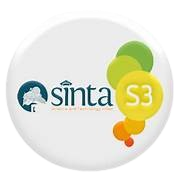The Effect of Harvard Step-Test and Shuttle Run-Test Training on Increasing Exercise Pulse Frequency in Junior High School Students
DOI:
https://doi.org/10.15294/peshr.v13i3.10602Keywords:
Harvard Step-test , Shuttle Run-test, Pulse rateAbstract
The objectives of this study were (1) to determine the effect of increasing Harvard Step-test exercise on increasing exercise pulse frequency in junior high school students; (2) to determine the effect of increasing Shuttle Run-test exercise on increasing exercise pulse frequency in junior high school students; (3) to determine the difference in the effectiveness of Harvard Step-test and Shuttle Run-test exercises on increasing exercise pulse frequency in junior high school students. The method used in this research is an experiment using Two Group Pretest-Postest Design. The samples used in this study were 46 students of Junior High School Plus Shafiyyatul Amaliyyah. The group pairing technique used was ordinal pairing. Data analysis techniques in this study used descriptive prerequisite tests and hypothesis testing. The results showed that there was a significant effect of Harvard Step-test exercise on increasing exercise pulse frequency in junior high school students with a significance value of p of 0.01. There is an effect of Shuttle Run-test exercise on increasing exercise pulse frequency in junior high school students with a significance value of p of 0.00 < 0.05. There is a difference in the effectiveness of Harvard Step-test and Shuttle Run-test exercises on increasing exercise pulse frequency in junior high school students, but not significant, as evidenced by paired t tests, the Harvard Step-test exercise group gets a mean of 44.652 for increasing student pulse frequency. While the Shuttle Run-test training group got an average of 41.792. Based on the results of the study, it can be concluded that the Harvard Step-test exercise has a more effective pulse rate increase compared to the Shuttle Run-test exercise.
